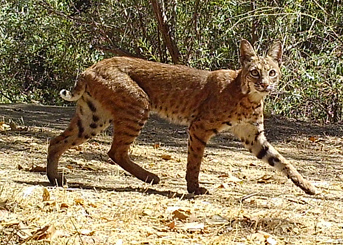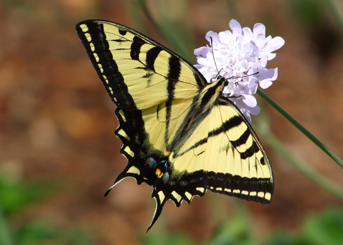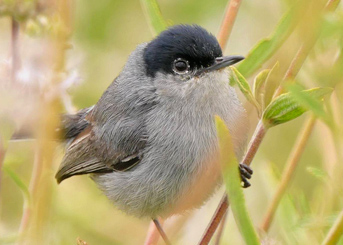UPDATE June 12, 2017

A lot of work is occurring in Powder Canyon! To initiate our restoration project, goats did a great job clearing the site of nonnative vegetation in the fall of 2016. When visiting Powder Canyon , you may notice the above-ground yellow/white irrigation pipes that have been installed throughout the 60-acre site. The irrigation is currently being used to stimulate weed growth that will be eliminated/killed using herbicide in a series of “grow-kill” events throughout the next year. A second year of grow-kill will likely be necessary in the coastal sage scrub habitat restoration sites due to the high amount of weeds in those areas. Additionally, three hundred and sixty (360) oak trees have been planted and root guards have been, and continue to be, installed for the additional oaks/walnuts. Irrigation is also being used to water the oak trees and will be used in the future in all areas once hydroseeding occurs and additional trees/shrubs are planted.
Also, lo cal seeds within the Preserve are and will be collected as seed of various species mature, and will be propagated in preparation for the native plant installation, expected to be in the winter of 2018-19. The overall goal with this project is to create 60 acres of native habitat that meets federally designated success criteria in part that supports the coastal California gnatcatcher.
cal seeds within the Preserve are and will be collected as seed of various species mature, and will be propagated in preparation for the native plant installation, expected to be in the winter of 2018-19. The overall goal with this project is to create 60 acres of native habitat that meets federally designated success criteria in part that supports the coastal California gnatcatcher.
This project is being installed by the Habitat Authority’s landscaper, Nakae and Associates, monitored by the Habitat Authority’s biological monitor, Land IQ, and overseen by the Habitat Authority. This project satisfies Southern CA Edison’s federal mitigation requirements for impacts to woodlands, and the coastal CA gnatcatcher and its habitat in connection with their Tehachapi Renewable Transmission Project, Segments 7 & 8.

_______________________
Click here for more information and the original post about this project.





